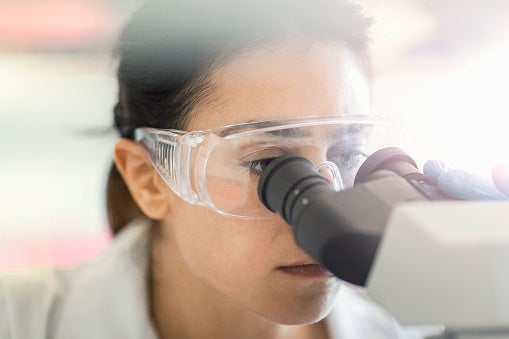
To what extent can machine learning and AI be used in the detection and treatment of cancer? originally appeared on Quora - the place to gain and share knowledge, empowering people to learn from others and better understand the world.
Answer by Kaisa Helminen, CEO of Fimmic, on Quora:
When most people think of the future of technology in medicine, they imagine robots performing surgery, smart scanners, or at least much more confident diagnoses. But we haven't seen this kind of innovation in most fields. One glaring example of this is in the field of pathology. The growth in number of requests for cancer screening will not be met by just hiring more pathologists. We need something better.
What most people don’t realize is that even in this world of self-driving cars and plans for travel to Mars, pathologists still run glass slides with tissue or fluid samples by courier from lab to lab for consultation, and rely heavily on manual slide viewing through an optical microscope lens. This leaves two very large opportunities for improvement: reduction of human errors made during manual slide viewing and finding the flexibility to do more, faster.
Breast cancer identification and classification, as an example, requires very careful analysis of tissue samples to identify and quantify specific biomarkers. Doing this manually requires a slow and methodical scan over samples to find and quantify these indicators. This leaves a lot of room for error due to many human factors, such as fatigue and experience; with the field of cancer research’s constant evolution, it can become more and more difficult as identification methods evolve.
To combat this using the cloud and AI, pathologists can take gigapixel (1 billion or more pixels) stitched images of a tissue sample with file sizes reaching larger than that of a digital 4k movie on Blu-ray and upload them to the WebMicroscope Cloud Platform where our technology uses Artificial Intelligence (Deep Learning and Computer Vision to be more specific) to process the massive images to detect and quantify those cancer biomarkers. To put that into perspective, this is like taking a satellite image of European continent and identifying and counting every pink car. These gigantic images of tissue and cell samples require easily scalable storage and processing capacity. Moving forward, we'll be using the NVIDIA P100 Tesla GPU instances in Microsoft Azure for this, the fastest AI GPU option in the cloud, making the possibilities endless.
Using the artificial intelligence algorithms trained for the specific application, we can support pathologists and researchers to improve their decision-making workflow. For instance, you can train a neural network to identify any visible feature on tissue samples by feeding it thousands upon thousands of carefully labeled tissue samples, making it amazingly accurate and reproducible. The image analysis algorithm is tireless; it always performs the same way.
Now, a pathologist can process a slide by taking a gigapixel high-resolution image and passing it through our web application, and in just a few minutes have a resulting image that contains a clear heatmap or direct pointers highlighting what they were originally searching for. Think of being able to view that satellite image of Europe with clear arrows pointing at all those pink cars, along with the ability to zoom all the way in to see each individual car and to be able to have a clear count of all of them.
Through manual viewing, this is nearly impossible on that scale, but using our Deep Learning algorithms, we can perform this task extremely fast.
Being in the cloud also allows additional benefits in terms of education, scalability, and collaboration.
In many medical universities, pathology classes are still dependent on conventional microscopes and students are huddled in small teams around microscopes taking turns at viewing tissue samples. With our WebMicroscope Cloud Platform students are already independently viewing the high resolution digital images on a their personal tablets, anywhere and anytime.
In terms of scalability, with the growing volume of tissue samples and the shortage of the pathologist workforce, there is an immediate need to be able to scale sample assessment. This technology allows us to enable pathologists and researchers to do their jobs faster and more accurately than ever before.
Additionally, with a cloud service, getting a second opinion becomes extremely easy. Just sharing the image file within the platform with other users takes just a few clicks. Drastically improved when compared to sending the physical glass slide sample to different labs.
This question originally appeared on Quora - the place to gain and share knowledge, empowering people to learn from others and better understand the world. You can follow Quora on Twitter, Facebook, and Google+. More questions:
